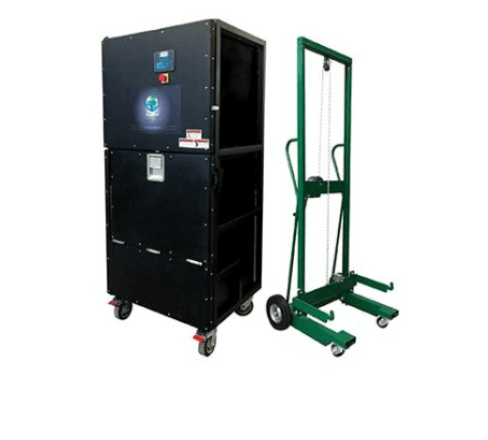CALL NOW FOR A FREE QUOTE 866.760.8194
Restaurant Waste Management 101: Selecting the Best Cardboard Baler/Compactor
Were you aware that you can recycle the cardboard waste generated by your restaurant and turn it into a revenue stream? Most restaurant owners are surprised to learn that all of the cardboard waste they have been putting in the trash is actually money they have been throwing away.
Part of the reason so many restaurants don’t have a cardboard restaurant waste management program is that the owners are not sure how or where to begin. Fortunately, that is not difficult with help from one of our experienced waste management consultants.
The Best Way to Recycle Cardboard

There are two different types of waste management equipment you can use when recycling cardboard: balers and compactors. There are some key differences between the two you will need to know to help select the best one.
The first thing you will want to do is decide how much space you have available for a compactor or baler machine. If you rent or lease your building, you will want to ask your landlord if you can place a compactor on the property outside next to the other trash bins.
If your landlord won’t give you permission to put a compactor outside, then there are indoor models you can use instead. Indoor models are also great to use when you are tight on space outdoors—like in major cities with narrow alleys.
Baler Machines
Baler machines are designed to compact cardboard so it can be tied into bales. Some machines can also bale plastics and other recyclable materials. Balers are meant to be placed indoors.
There are two different options offered with balers:
- Vertical Balers: Vertical models provide a cost-effective solution when you have smaller quantities of cardboard to recycle. They are also smaller, so they work well when you have less space to work with indoors. (Mind you, there is nothing “small” about these vertical balers as they stand roughly 16 feet high!)
- Horizontal Balers: Horizontal models are ideal for businesses with large volumes of cardboard to recycle. These machines are more abundant in size and require a sufficient amount of space, especially if placed outside, as you will need to build a protective cover for the machine. Where you decide to station your cardboard baler and how well you take care of it, will determine its longevity.
Compactors

Compactors compact all sorts of waste so you can reduce the amount of trash being generated by your restaurant. Just like baler machines, there are both vertical and horizontal compactors. There are also indoor trash compactor models.
For most restaurants, an indoor trash compactor can be very beneficial to use before taking out the trash. For example, our GTS2000 indoor trash compactor compacts waste at a 15 to 1 ratio. This means that you can compact 20 normal bags of trash down into 1! Imagine the savings you can gain when your dumpster isn’t getting full as fast and you need fewer trash pickups.
The GTS2000 also bales cardboard for recycling. All that is required to use the baling feature is to remove the compactor trash bin from inside the unit. Once the cardboard is compacted, you bale it into bundles. The bundles can then be sold to recycling centers and other sources.
As you can imagine, by baling cardboard and other recyclable materials you can sell, you can create new revenues for your restaurant. You could even sell certain types of food waste to organic farmers in your area for composting!
To learn more about restaurant waste management and selecting the best compactor or baler for your restaurant, please feel free to contact Global Trash Solutions at 866-760-8194 to speak with a waste management consultant today!
Recent Post
Is Hiring a Waste Consultant Right for Your Business?
Managing waste and recycling needs poses a distinct hurdle for businesses focused on…
Read More >Understanding Scope 3 Emissions
Scope 3 emissions are an important component of a company’s total greenhouse gas…
Read More >